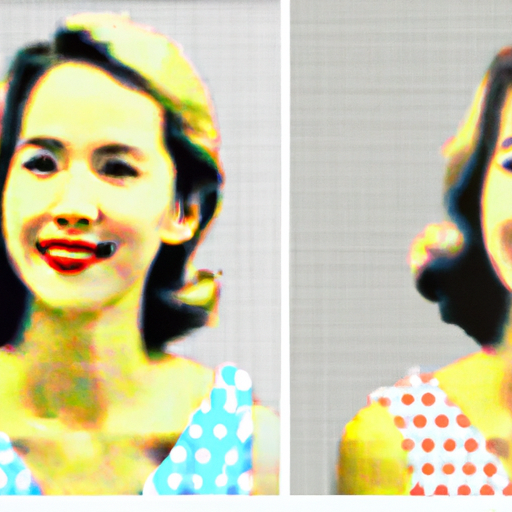-
Table of Contents
- From Pixels to Vectors: Converting Raster Images
- Understanding Raster Images
- The Advantages of Vector Graphics
- The Process of Converting Raster Images to Vectors
- Manual Tracing
- Automatic Tracing
- Combination Approaches
- Tools for Converting Raster Images to Vectors
- Adobe Illustrator
- Inkscape
- CorelDRAW
- Conclusion
From Pixels to Vectors: Converting Raster Images
Images play a crucial role in various fields, from graphic design to web development. However, not all images are created equal. There are two main types of digital images: raster and vector. While raster images are made up of pixels, vector images are composed of mathematical equations. In this article, we will explore the process of converting raster images to vectors, the benefits of vector graphics, and the tools available for this conversion.
Understanding Raster Images
Raster images, also known as bitmap images, are made up of a grid of pixels. Each pixel contains information about its color and position, resulting in a detailed representation of an image. Common file formats for raster images include JPEG, PNG, and GIF.
One of the main characteristics of raster images is their resolution. Resolution refers to the number of pixels per inch (PPI) or dots per inch (DPI) in an image. Higher resolution images have more pixels, resulting in greater detail and clarity. However, increasing the resolution also increases the file size, making it more challenging to work with and share.
Raster images are ideal for representing complex and detailed visuals, such as photographs or realistic illustrations. However, they have limitations when it comes to scalability. Enlarging a raster image can lead to pixelation, where individual pixels become visible, resulting in a loss of quality.
The Advantages of Vector Graphics
Vector graphics, on the other hand, are created using mathematical equations that define lines, curves, and shapes. Instead of pixels, vector images use points, lines, and curves to represent objects. This mathematical representation allows vector graphics to be infinitely scalable without any loss of quality.
One of the significant advantages of vector graphics is their flexibility. Since vector images are composed of mathematical equations, they can be easily edited and manipulated. This makes them ideal for tasks such as logo design, typography, and illustrations.
Another benefit of vector graphics is their smaller file size compared to raster images. Since vector images only store mathematical equations, they require less storage space. This makes them easier to share, upload, and download, especially in situations where bandwidth is limited.
The Process of Converting Raster Images to Vectors
Converting raster images to vectors involves a process called vectorization. Vectorization is the process of converting the pixel-based information of a raster image into mathematical equations that define shapes and lines.
There are several methods and tools available for vectorization, each with its own strengths and limitations. Let’s explore some of the popular techniques:
Manual Tracing
Manual tracing involves manually recreating the raster image using vector editing software. This method requires skilled designers who can accurately trace the shapes and lines of the original image. While manual tracing provides precise control over the vectorization process, it can be time-consuming, especially for complex images.
Automatic Tracing
Automatic tracing, also known as auto-tracing, utilizes algorithms to convert raster images into vector format. These algorithms analyze the pixel information and attempt to identify shapes and lines automatically. While automatic tracing can save time, it may not always produce accurate results, especially for images with complex details or noise.
Combination Approaches
Some vectorization tools combine manual and automatic tracing techniques to achieve the best results. These tools allow designers to manually trace certain parts of the image while relying on automatic tracing for the rest. This approach combines the precision of manual tracing with the efficiency of automatic tracing.
Tools for Converting Raster Images to Vectors
There are numerous software tools available for converting raster images to vectors. Let’s explore some of the popular options:
Adobe Illustrator
Adobe Illustrator is one of the most widely used vector editing software. It offers a range of powerful tools for vectorization, including manual tracing options and automatic tracing algorithms. With its intuitive interface and extensive features, Adobe Illustrator is a top choice for professional designers.
Inkscape
Inkscape is a free and open-source vector graphics editor. It provides a user-friendly interface and a variety of vectorization options. Inkscape supports both manual tracing and automatic tracing using the Potrace algorithm. This makes it a popular choice for beginners and those on a budget.
CorelDRAW
CorelDRAW is another popular vector graphics editor that offers comprehensive vectorization capabilities. It provides a range of tools for manual tracing, as well as automatic tracing options. CorelDRAW is known for its user-friendly interface and extensive feature set, making it suitable for both beginners and professionals.
Conclusion
Converting raster images to vectors opens up a world of possibilities for designers and creatives. By converting images into mathematical equations, vector graphics offer scalability, flexibility, and smaller file sizes. Whether through manual tracing, automatic tracing, or a combination of both, the process of vectorization allows for precise control over the conversion process.
With the availability of powerful software tools like Adobe Illustrator, Inkscape, and CorelDRAW, converting raster images to vectors has become more accessible than ever. Designers can choose the method and tool that best suits their needs and create stunning vector graphics for various applications.
So, the next time you come across a raster image that needs to be scaled or edited, consider converting it to a vector format. Embrace the power of vectors and unlock a new level of creativity and flexibility in your design projects.
